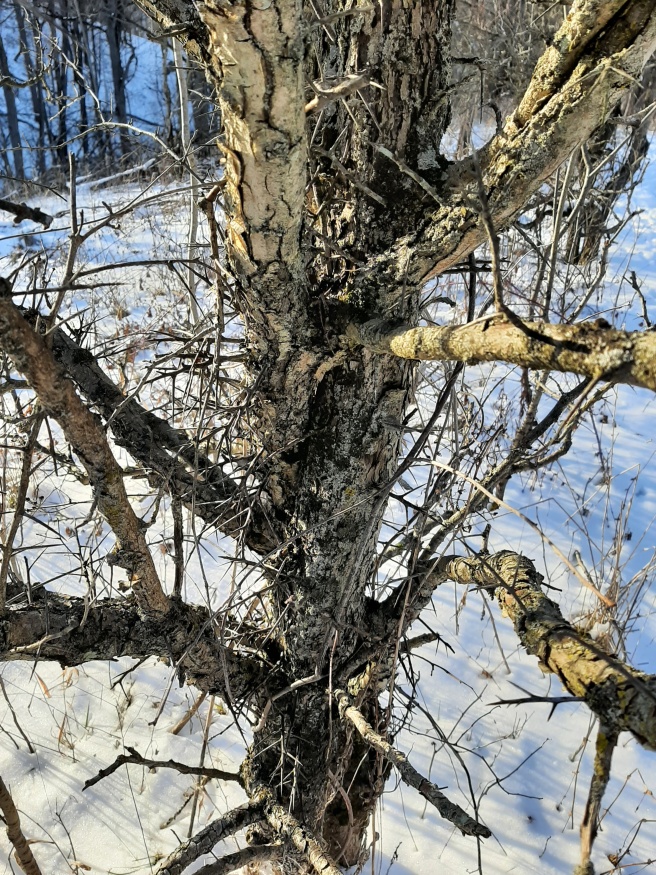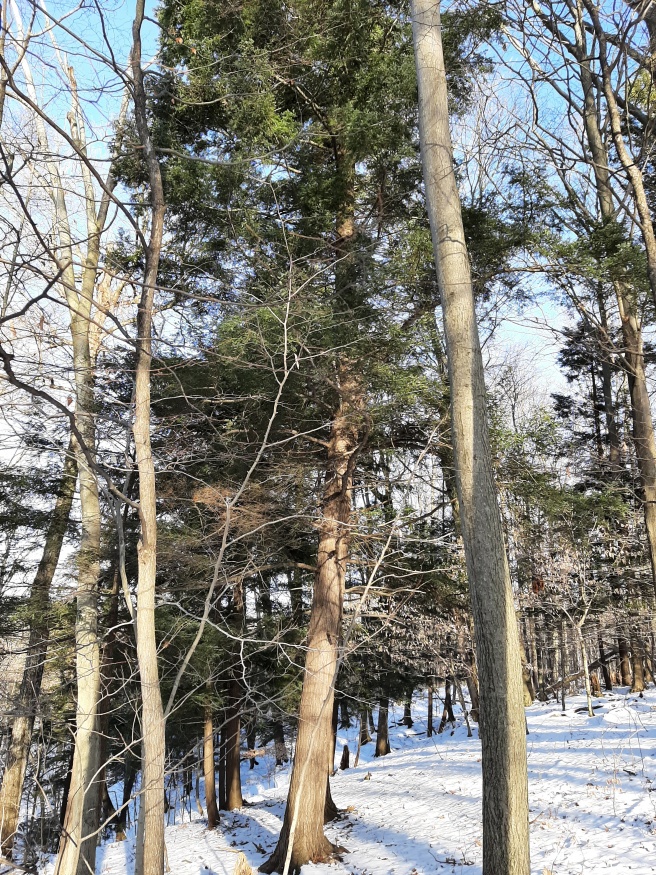Bored with COVID? Try Tree Identification fun!
While passing through short hills trail today with the kids, I decided to snap a few shots and make a post about some of the forest trees here in Niagara. Tree identification turned out to be a nice change, given the limitations right now on where families can go and what they can do. Although leaves aren't usually an option for identification in the winter, it's surprising how easy some trees are to decipher by just looking closely at bark, buds and overall shape/habit.
If you see a scraggly small tree or shrub with large thorns it could be a hawthorn. What kind? That's beyond me. There are about 30 species native to Canada and many are hybrids or hard to tell apart. So I just call it a hawthorn :). American plum trees also have massive thorns and flowers like hawthorns but the bark is more smooth and with horizontal markings (lenticels) present like that of a cherry tree.


Beech trees are easy to identify because their bark is normally smooth, kind of like an elephant skin. Unfortunately this makes them often a target for carved love inscriptions. Their golden papery leaves also often persist on the branches in the winter.

This one has succumbed to beech bark disease (see the bumps and cracks), like so many other American beech trees in our area. You can read about that here if you'd like.

Black walnut trees have a distinct diamond-shaped bark that continues quite uniformly all the way up to its branches. They're plentiful in Niagara, especially in short hills.


Here's a bunch of them growing together.

Poplar or aspen bark is light in colour like birch, but is more tightly formed and doesn't peel. Poplars can often be found growing together in a colony like this one

What's this shaggy fellow doing out here... You can't miss the shagbark hickory! Probably the easies to ID in the winter.

Eastern red cedar are shrubs to small evergreen trees resembling loose, open junipers. Actually they are junipers, but called cedars for silly reasons we won't get into.

These massive crumbling trees with open, fence-like bark are golden weeping willow trees. They're native to China, but naturalized here in North America. You will often see them by water, hollow, and falling apart.

Thick, woody, wild grape vines can be seen hanging off trees.

Eastern hop hornbeam trees have these thin, plentiful strips of peely vertical bark. They're usually small to medium sized trees.

Boxelder or Manitoba maple trees have twig ends that look kind of like bamboo. There may also be dry maple "keys" hanging at this time of year. Their angle of attachment is narrow or tighter together than most other maples.


Eastern hemlock trees have needles like a fir tree except they're more flat and point out horizontally. These are the only native trees with fir-like needles around here. Hemlocks are usually small in Niagara but there are occasional large-ish ones like this.


If you see a young, fully dead tree with bark like this, it's likely an ash tree (green or white). The emerald ash borer (beetle) has decimated much of the ash tree population in North America.

White pine trees are the only native pine trees found in Niagara. They have wispy flexible needles and an interesting silhouette.

That covers just a handful of trees that can be found in the Niagara "Carolinian" forest. Next time you're shut in and bored from all this COVID stuff, consider going out in your backyard, or forest and look at some trees! Don't let exactness drive you crazy. Just knowing a few trees or what category of tree something belongs to will put you above average. Want to learn more about Niagara's native trees? Check out our native tree list. We're we're continuing to add content to it along with articles like these.